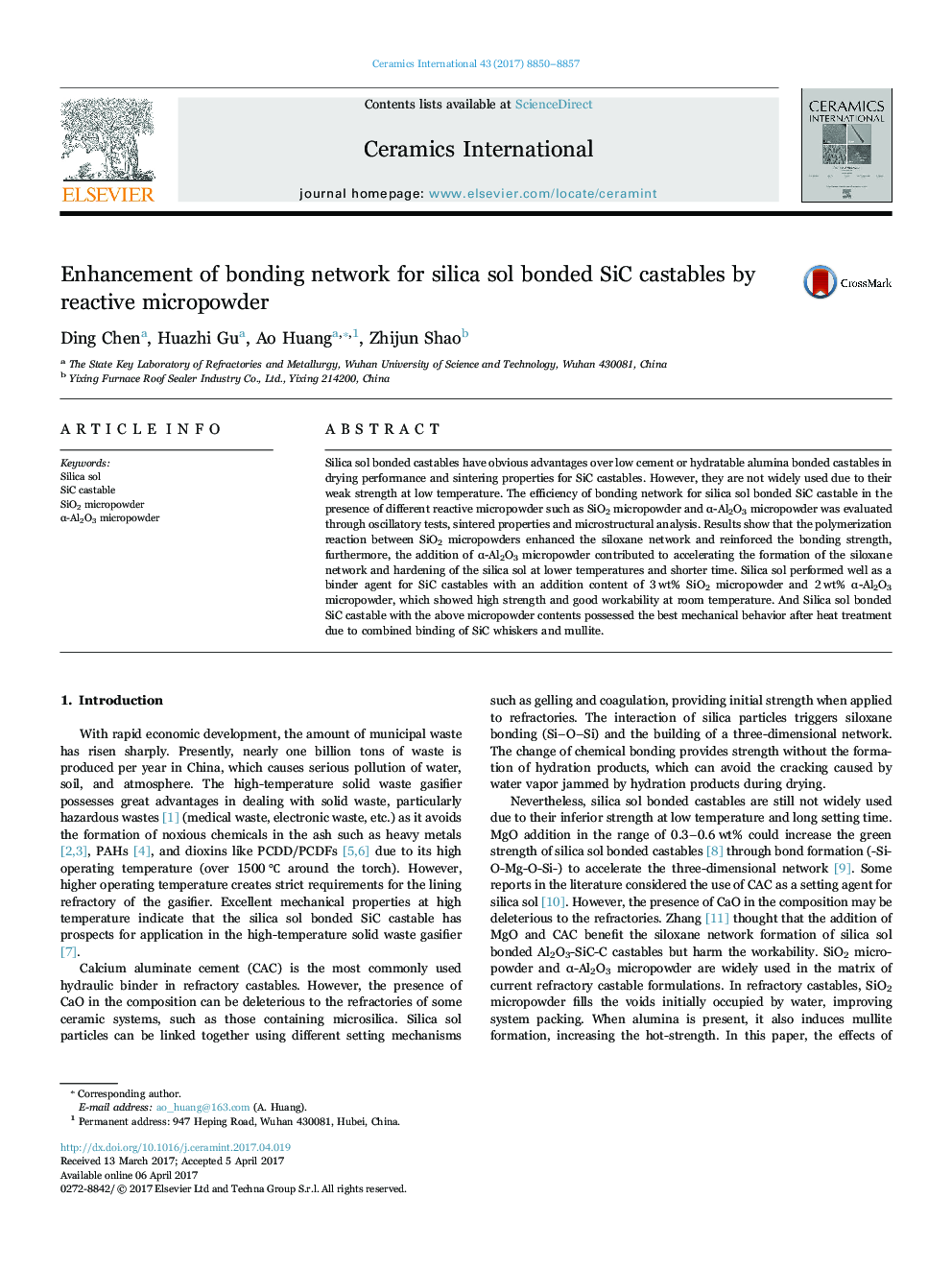| Article ID | Journal | Published Year | Pages | File Type |
|---|---|---|---|---|
| 5438349 | Ceramics International | 2017 | 8 Pages |
Abstract
Silica sol bonded castables have obvious advantages over low cement or hydratable alumina bonded castables in drying performance and sintering properties for SiC castables. However, they are not widely used due to their weak strength at low temperature. The efficiency of bonding network for silica sol bonded SiC castable in the presence of different reactive micropowder such as SiO2 micropowder and α-Al2O3 micropowder was evaluated through oscillatory tests, sintered properties and microstructural analysis. Results show that the polymerization reaction between SiO2 micropowders enhanced the siloxane network and reinforced the bonding strength, furthermore, the addition of α-Al2O3 micropowder contributed to accelerating the formation of the siloxane network and hardening of the silica sol at lower temperatures and shorter time. Silica sol performed well as a binder agent for SiC castables with an addition content of 3 wt% SiO2 micropowder and 2 wt% α-Al2O3 micropowder, which showed high strength and good workability at room temperature. And Silica sol bonded SiC castable with the above micropowder contents possessed the best mechanical behavior after heat treatment due to combined binding of SiC whiskers and mullite.
Keywords
Related Topics
Physical Sciences and Engineering
Materials Science
Ceramics and Composites
Authors
Ding Chen, Huazhi Gu, Ao Huang, Zhijun Shao,
